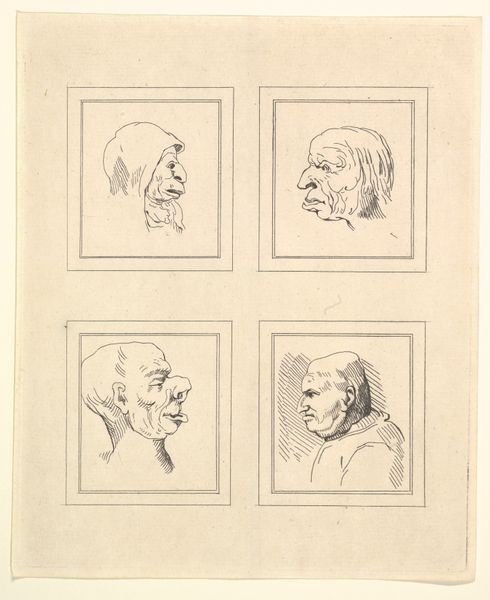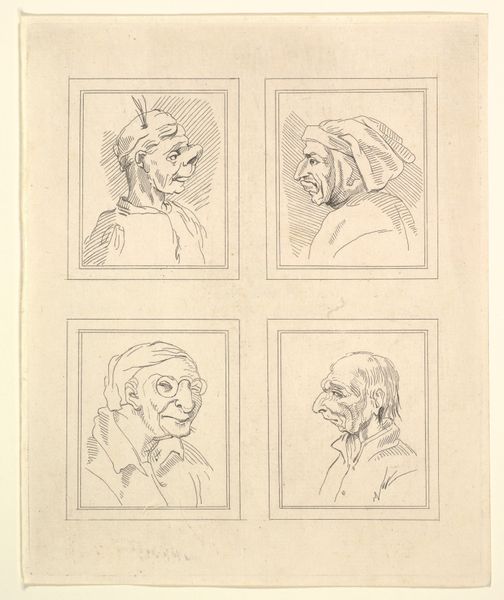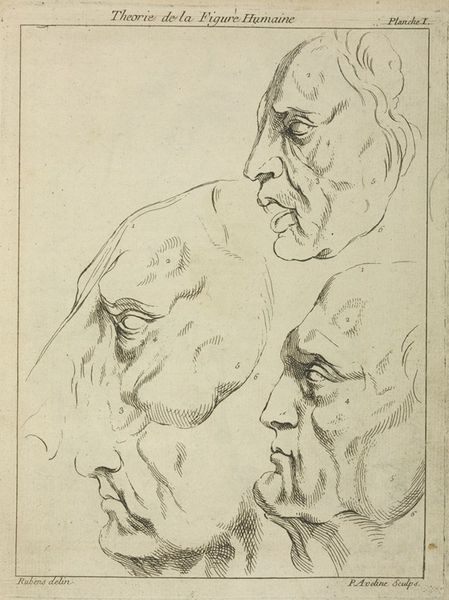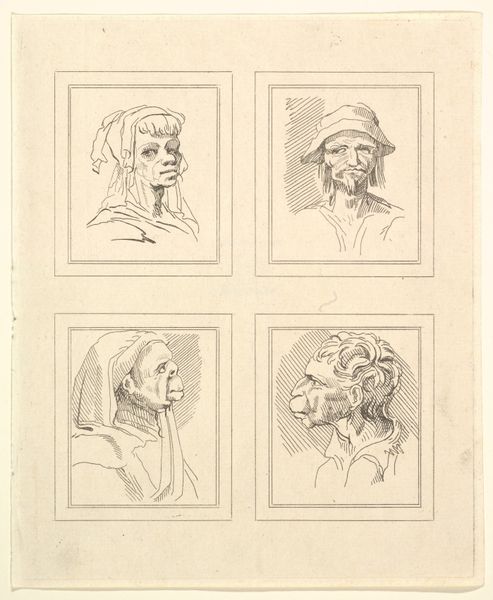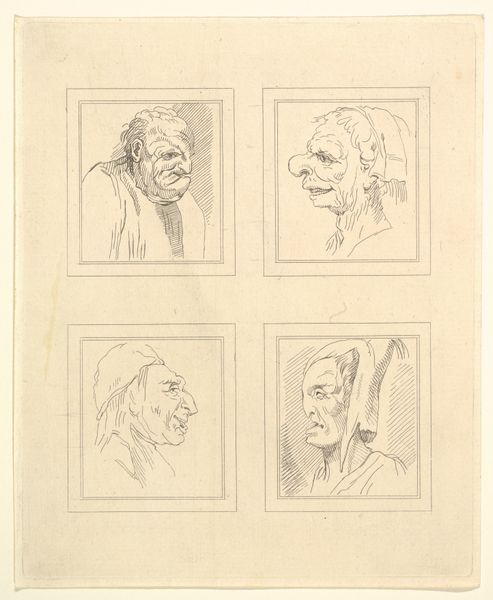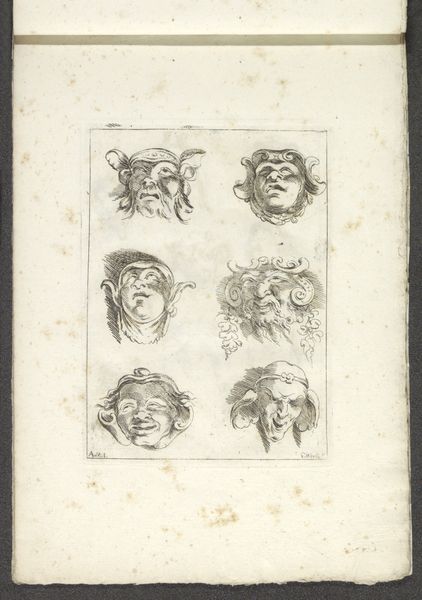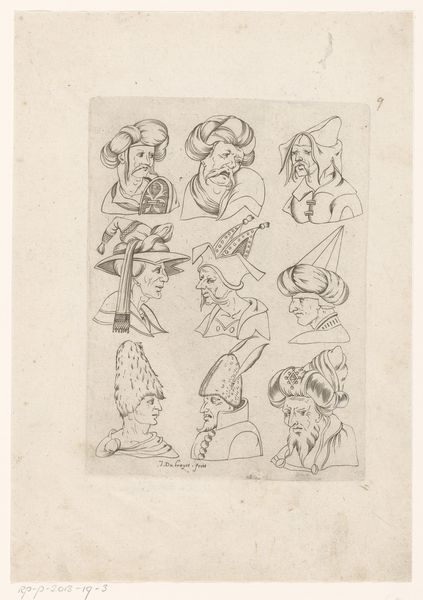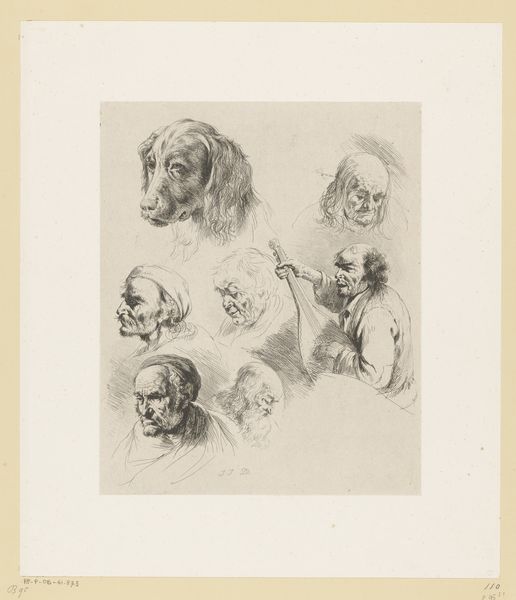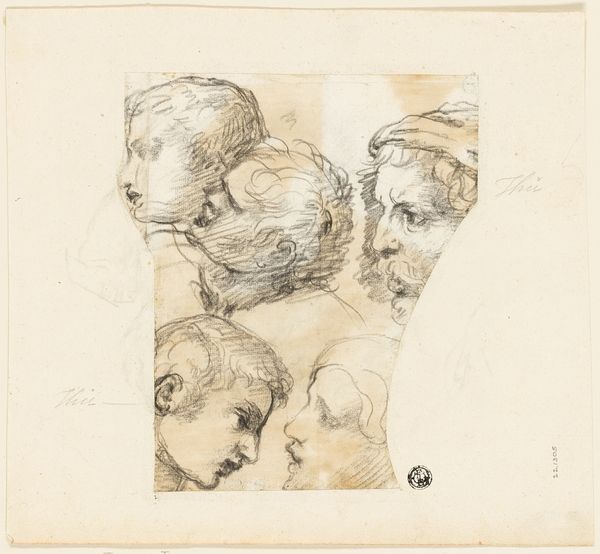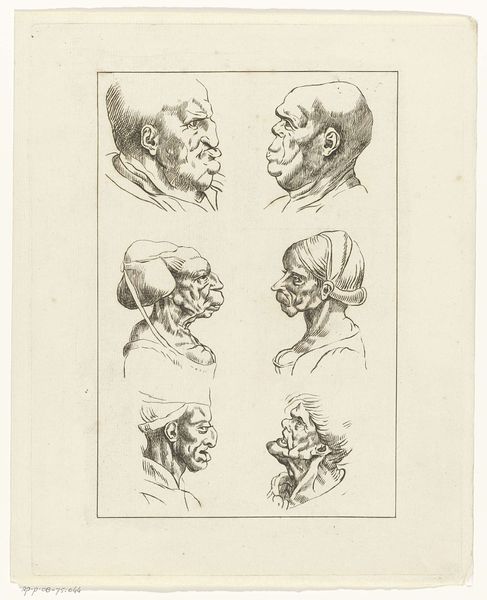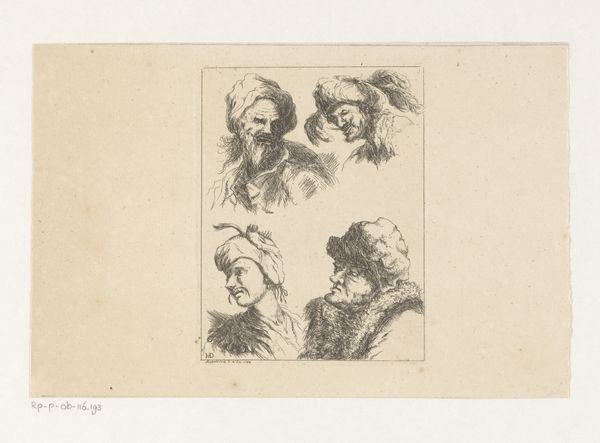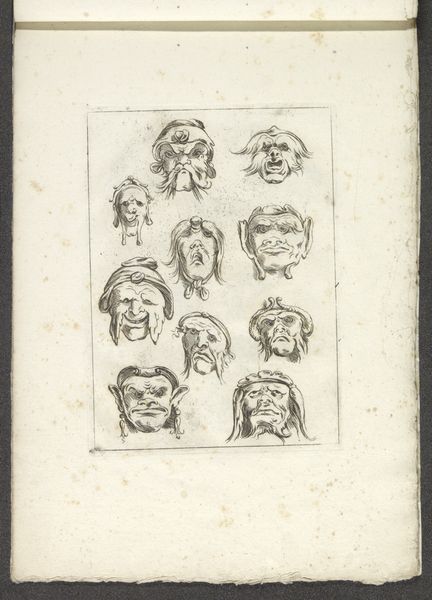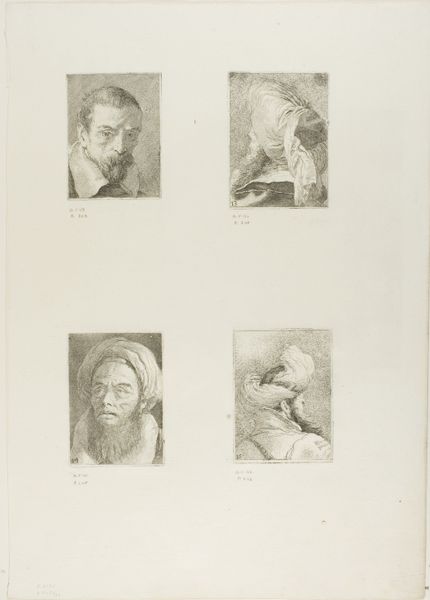
Four Heads (from Characaturas by Leonardo da Vinci, from Drawings by Wenceslaus Hollar, out of the Portland Museum) 1786
0:00
0:00
drawing, print, etching, engraving
#
portrait
#
drawing
# print
#
etching
#
caricature
#
figuration
#
line
#
14_17th-century
#
engraving
Dimensions: Plate: 7 11/16 x 6 1/4 in. (19.5 x 15.8 cm) Sheet: 7 7/8 x 6 7/16 in. (20 x 16.4 cm)
Copyright: Public Domain
Curator: Looking at this etching titled "Four Heads," created around 1786 by Wenceslaus Hollar after sketches by Leonardo da Vinci, I am struck by the way it plays with form. It almost feels like Hollar is winking at us across the centuries. Editor: My first impression is…humorous! The expressions are exaggerated, but with such detail. I sense both a detached observation and an odd fondness for these quirky faces. It’s minimalist in its lines, but bursting with character. Curator: Absolutely! You know, these aren't simply random portraits. Hollar, a prolific 17th-century engraver, took Leonardo's original, much earlier caricatures and reimagined them. Think of it as a conversation through time. These exaggerated features-- the noses especially—they point to Renaissance theories of physiognomy, where outer appearance reflected inner character. Editor: So, the aquiline nose, the jutting jaw—they’re not just funny exaggerations but coded symbols. Interesting! And, these drawings, they all focus on profiles, don’t they? I'm trying to pinpoint what gives them that uncanny quality— the fine line work almost mimics a kind of stark clinical observation. But what are they telling us? Curator: Yes, the profiles are crucial. Leonardo used the profile to expose the sitter in a new, almost dissecting way. They speak to our long standing tradition of critiquing each other in an almost dehumanizing fashion that still finds traction today, especially in caricatures. And yet...they remain people, you know? Editor: Precisely! The symbol overrides the individual, dehumanizing in a fashion. Do you feel they elicit sympathy or criticism more? Curator: It’s both, I think. We’re invited to laugh, but also to contemplate the human condition, to think about the assumptions we make about others. Hollar isn't just replicating Leonardo; he's inviting us to re-evaluate this very gaze. He presents it without judgement, allowing us the option to make our own informed conclusions about this work and its message. Editor: It makes one realize how much we rely on visual cues and stereotypes to understand others, or rather, misunderstand them. I'll be thinking about that dichotomy for a while. It has layers and that's what great art is all about. Curator: Yes, I think the brilliance lies in how these simple lines manage to provoke such complex reflections.
Comments
No comments
Be the first to comment and join the conversation on the ultimate creative platform.
